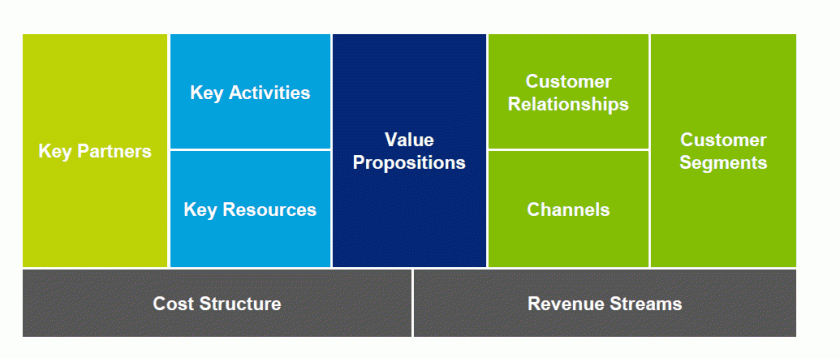
The Business Model Canvas by Alex Osterwalder and Yves Pigneur
We are witnessing a sweeping change being undertaken within the energy sector. The shifting away from traditional models of energy supply, based on one fuel, with limited or no choice for the ultimate consumer, has been our energy system for decades.
Today the energy dynamics of supply and demand are significantly changing. Monopolies are breaking down; be these in the single use of one fuel, in the past fossil fuel (oil, gas, coal) to generate the energy are now being challenged and progressively replaced with the cleaner, more friendly sustaining alternatives offered by solar, wind, water. These offer solutions to bringing down our carbon emissions but are far more dramatic in their impact on the energy systems we have in place.
New enabling technologies are opening us to new opportunities.
The balance between the supply side and the demand is dramatically shifting. The consumer suddenly has a choice and is exercising that in demanding their energy supply to be clean and friendly and expecting new pricing models to reflect their preferences and lifestyles, personalized to their needs. The final consumer is exercising control over their buying experience. The energy supply is becoming vital to them and aligned to the needs of contributing to the cleaning up of the environment, caused by the burning of fossil fuels.
The demands for cleaning up our environment, having clean energies, and choice have begun to disrupt existing structures within the energy system radically. The search is to undertake a radical change in energy sourcing, generating, transmission, and final distribution, and this is coming through the relationship of exploring enabling technologies and innovation, exploiting new energy sources, and making the energy system more reliable, responsive, and efficient.
New business models are suddenly being explored.
Different market designs are going through rapid experimentation, piloting, and scaling. New, more flexible pricing models to attract the consumer in their usage and engagement have created a customer relationship change and different pricing models, more towards subscription as a service one.
Possession has become more fluid; we are sharing assets more to extract more flexible pricing and energy supplies closer to the consumer; we are renting more assets that do a specific job. We see the emergence of the Grid Edge, where intelligent assets are deployed to track, optimize, integrate, and encourage energy usage and saving.
The evolution of business models across the Energy Value Chain
At the Fuel sourcing end, the transition from reliance on Fossil Fuels to having either a mix with renewables or the undertaking to a transition path that delivers power from renewables alone is one major transformation. The implication in different plants, sourcing, and planning is enormous.
The Generation Industry is needing to rethink their business models, ones that are fundamentally moving from a centrally grid-scaled model to a provider of grid services based on fuel source, the attention to higher reliability and cost mechanisms of in and output options
Transmission is moving from one way flows to managing complex power flows. More rerouting, switching, upgrade distribution grids to transmit, store, and become closer to the end market.
Distribution is rapidly moving from manual control to smaller distributed power facilities that provide flexibility for more local power management that integrates variable renewable sources and optimizes capacity supply and demand through power flows and digitally management services
Utilities are rapidly adapting to change from big electricity providers by directly selling power to large generation customers but learning how to aggregate, coordinate and offer different services closer to the customer’s end needs
The final consumer or prosumer are building or requiring their individual small energy systems so that they can optimize to their need and any surplus gets fed back into the grid when it is not needed, offsetting costs and can begin to consider community energy provider arrangements, so they become part of an aggregated system that builds storage into the energy supply mix to have more consistent, reliable flows and pricing.
The need is to explore and exploit new business opportunities
So many new business models are being explored with these changes, new contract arrangements, a different relation of supply of energy and customer. The delivery market will have strong middlemen acting as aggregators or specific delivery market operators that form a partnership with both ends participating, of users and power generation providers. Different pricing models more based on bidding, personal contracts specific to one customer, different pay service arrangements
The time is right to explore new business models
Today with all the changes and options undertaken in the Energy Transition it is the time for designing and building new Business Models for Energy and knowing the value and aspects of the Business Model Canvas gives a sound point of exploring and experimenting on all the different options within the specific market designs available or planned.
It is well worth revisiting the two books of “Business Model Generation” and “Value Proposition Design,” written by Alex Osterwalder and Yves Pigneur. They can give you an outstanding clarity of building different business models for the significant changes being undertaken in the Energy Transition currently underway.